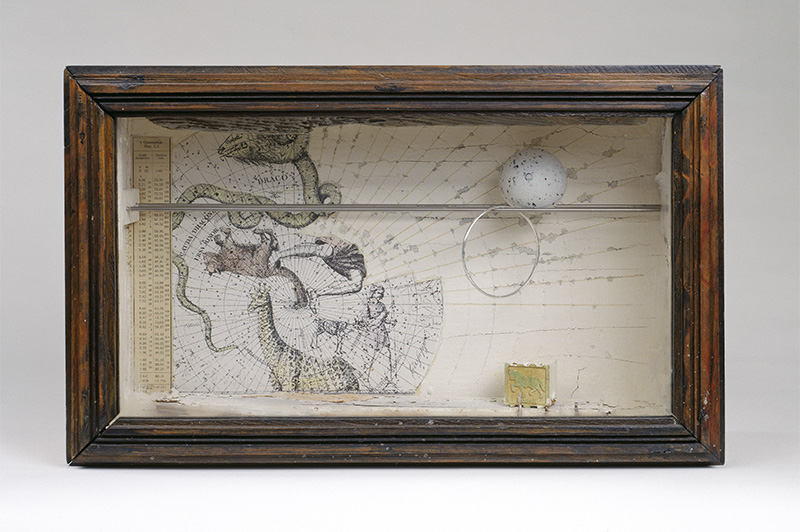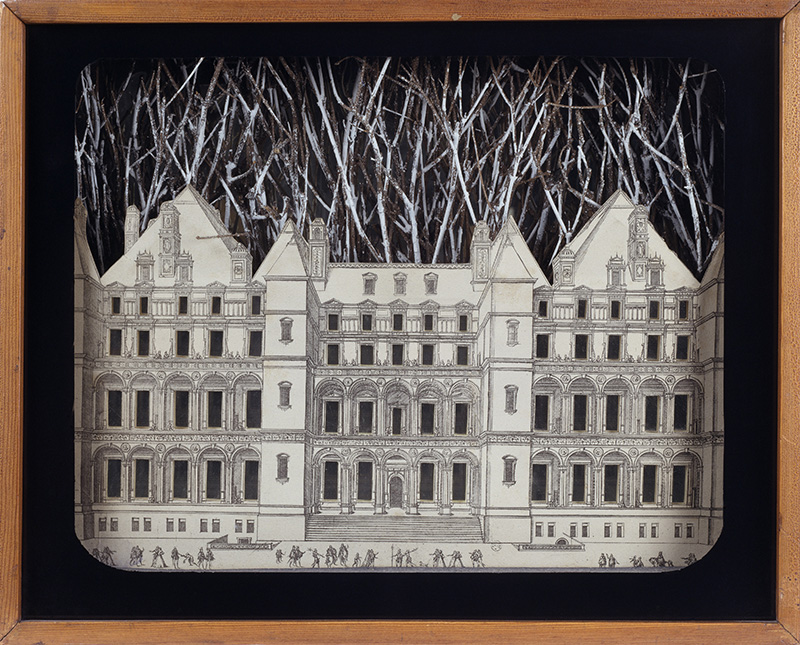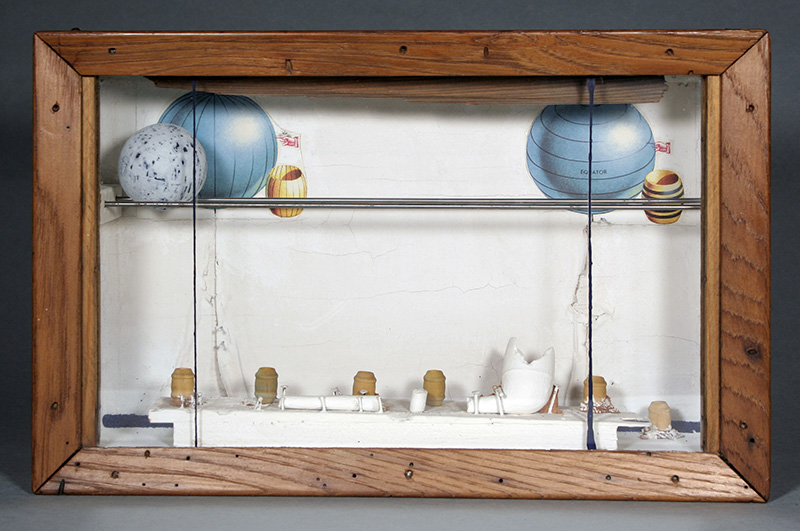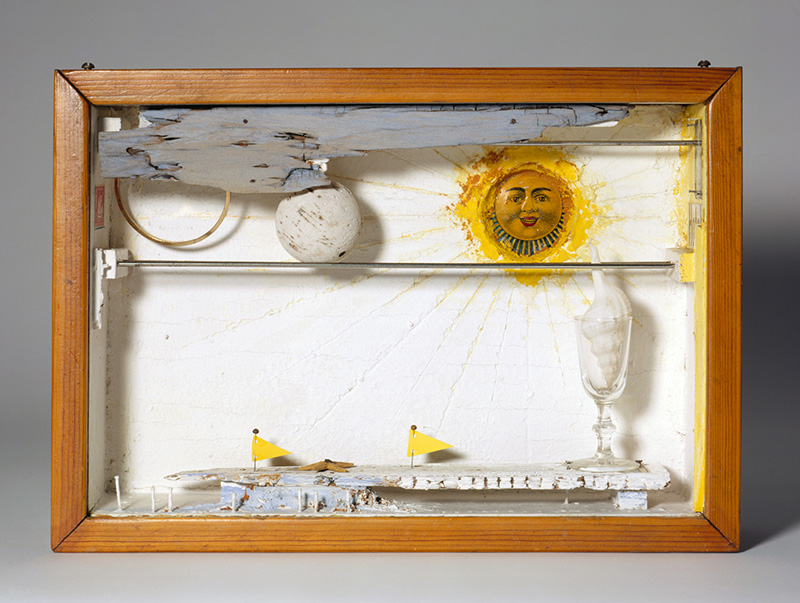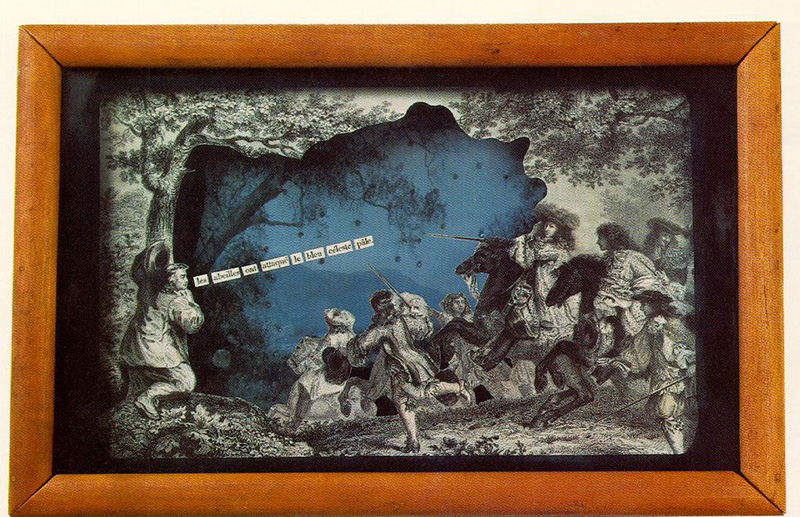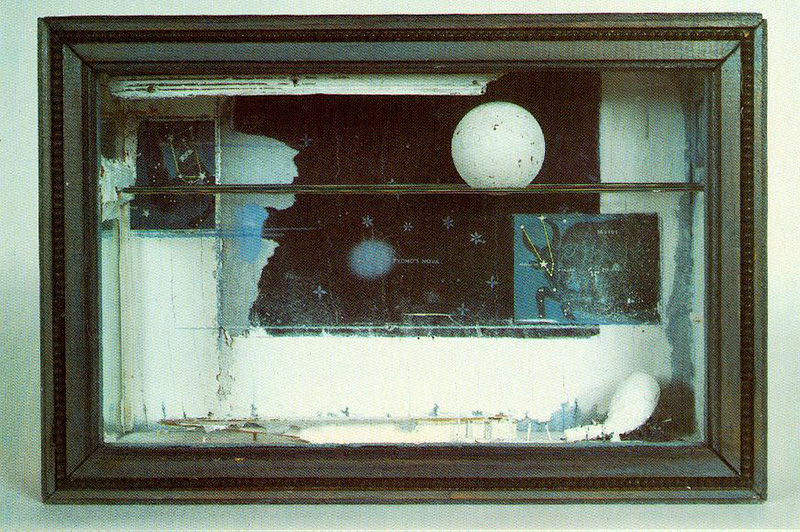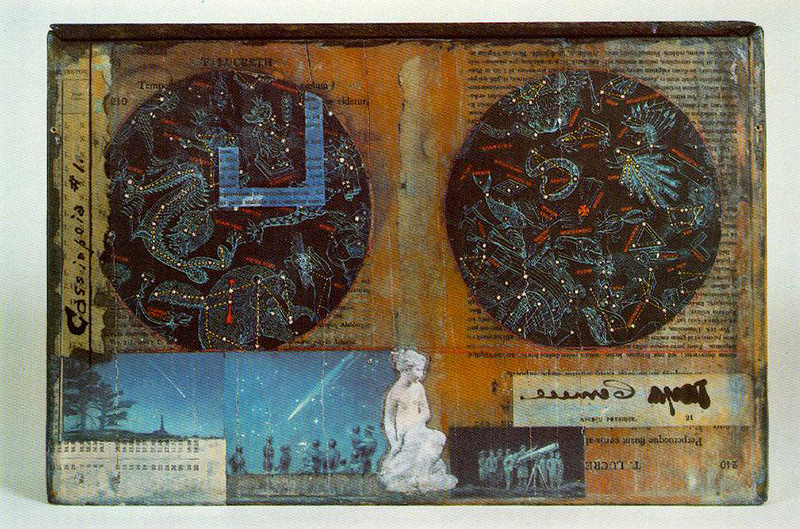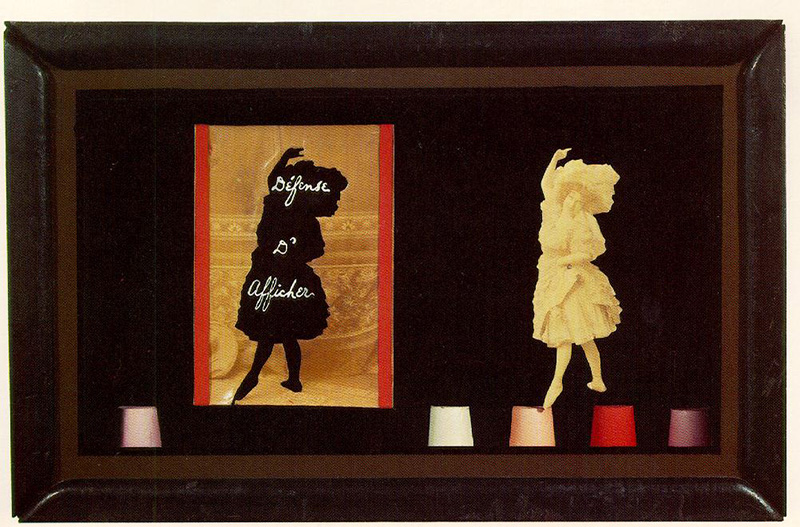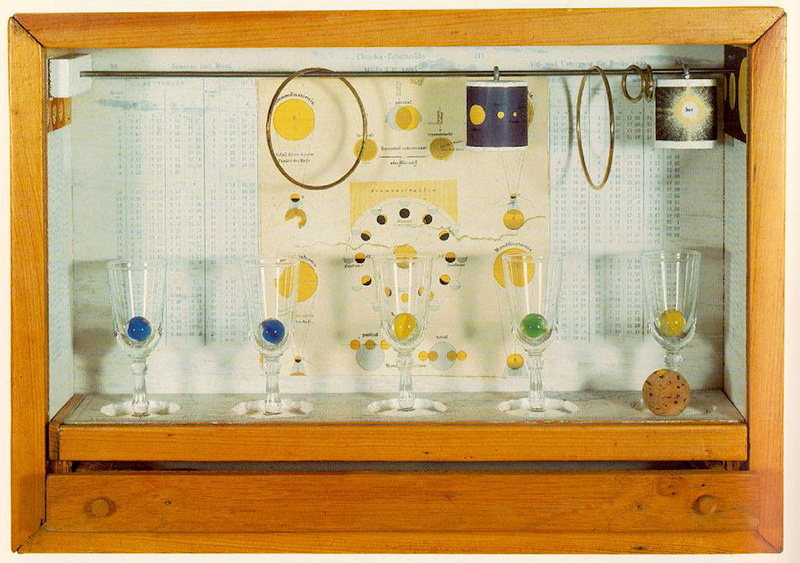TRACES: Joseph Cornell
 Today is the occasion to bear in mind, one of the pioneers and most celebrated exponents of assemblage, Joseph Cornel (24/12/1903-29/12/1972). He had no formal training in art and his most characteristic works are his highly distinctive “boxes”. These are simple boxes, usually glass-fronted, in which he arranged surprising collections of photographs or Victorian bric-à-brac in a way that combines the formal austerity of Constructivism with the lively fantasy of Surrealism. This column is a tribute to artists, living or dead, who have left their mark in Contemporary Art. Through documents or interviews, starting with: moments and memories, we reveal out from the past-unknown sides of big personalities, who left their indelible traces in time and history…
Today is the occasion to bear in mind, one of the pioneers and most celebrated exponents of assemblage, Joseph Cornel (24/12/1903-29/12/1972). He had no formal training in art and his most characteristic works are his highly distinctive “boxes”. These are simple boxes, usually glass-fronted, in which he arranged surprising collections of photographs or Victorian bric-à-brac in a way that combines the formal austerity of Constructivism with the lively fantasy of Surrealism. This column is a tribute to artists, living or dead, who have left their mark in Contemporary Art. Through documents or interviews, starting with: moments and memories, we reveal out from the past-unknown sides of big personalities, who left their indelible traces in time and history…
By Dimitris Lempesis
 Joseph Cornell was born in Nyack, New York. From 1917 to 1921, he attended Phillips Academy, Andover, Massachusetts. He was an avid collector of memorabilia and, while working as a woolen-goods salesman at Whitman’s wool shop on Madison Avenue, a job which he lost in the Depression; however, he was eventually hired as a textile designer at the Traphagen Studio. He perused small Asian shops in Manhattan to see Japanese prints, and it was at one of these shops that Cornell discovered the first boxes he would use for his art, which eventually became his signature shadow boxes. In the early ‘30s, Cornell met Surrealist writers and artists at the Julien Levy Gallery, New York, and saw Max Ernst’s collage-novel “La Femme 100 têtes”. He had his first solo exhibition “Minutiae, Glass Bells, Coups d’Oeil, Jouet Surrealistes” at Julien Levy Gallery, in 1932. From 1934 to 1940, Cornell supported himself by working as a textile designer at the Traphagen studio in New York. During these years, he became familiar with Marcel Duchamp’s readymades and Kurt Schwitters’s box constructions. Cornell was included in the 1936 exhibition “Fantastic Art, Dada, Surrealism” at the Museum of Modern Art in New York with one of his earliest boxes, “Untitled (Soap Bubble Set)” (1936). Always interested in film and cinematic techniques, he made a number of movies, including the collage film “Rose Hobart” (ca. 1936) and wrote two film scenarios. One of these, “Monsieur Phot” (1933), was published in 1936 in Levy’s book Surrealism. During the ‘40s and ‘50s, he made “Aviary”, “Hotel”, “Observatory”, and “Medici” boxes, among other series, as well as boxes devoted to stage and screen personalities. In the early ‘60s, Cornell stopped making new boxes and began to reconstruct old ones and to work intensively in collage.Cornell retrospectives were held in 1967 at the Pasadena Art Museum and the Solomon R. Guggenheim Museum in New York. In 1970, the Metropolitan Museum of Art in New York mounted an exhibition of his collages. Cornell died at his home in Flushing.
Joseph Cornell was born in Nyack, New York. From 1917 to 1921, he attended Phillips Academy, Andover, Massachusetts. He was an avid collector of memorabilia and, while working as a woolen-goods salesman at Whitman’s wool shop on Madison Avenue, a job which he lost in the Depression; however, he was eventually hired as a textile designer at the Traphagen Studio. He perused small Asian shops in Manhattan to see Japanese prints, and it was at one of these shops that Cornell discovered the first boxes he would use for his art, which eventually became his signature shadow boxes. In the early ‘30s, Cornell met Surrealist writers and artists at the Julien Levy Gallery, New York, and saw Max Ernst’s collage-novel “La Femme 100 têtes”. He had his first solo exhibition “Minutiae, Glass Bells, Coups d’Oeil, Jouet Surrealistes” at Julien Levy Gallery, in 1932. From 1934 to 1940, Cornell supported himself by working as a textile designer at the Traphagen studio in New York. During these years, he became familiar with Marcel Duchamp’s readymades and Kurt Schwitters’s box constructions. Cornell was included in the 1936 exhibition “Fantastic Art, Dada, Surrealism” at the Museum of Modern Art in New York with one of his earliest boxes, “Untitled (Soap Bubble Set)” (1936). Always interested in film and cinematic techniques, he made a number of movies, including the collage film “Rose Hobart” (ca. 1936) and wrote two film scenarios. One of these, “Monsieur Phot” (1933), was published in 1936 in Levy’s book Surrealism. During the ‘40s and ‘50s, he made “Aviary”, “Hotel”, “Observatory”, and “Medici” boxes, among other series, as well as boxes devoted to stage and screen personalities. In the early ‘60s, Cornell stopped making new boxes and began to reconstruct old ones and to work intensively in collage.Cornell retrospectives were held in 1967 at the Pasadena Art Museum and the Solomon R. Guggenheim Museum in New York. In 1970, the Metropolitan Museum of Art in New York mounted an exhibition of his collages. Cornell died at his home in Flushing.

